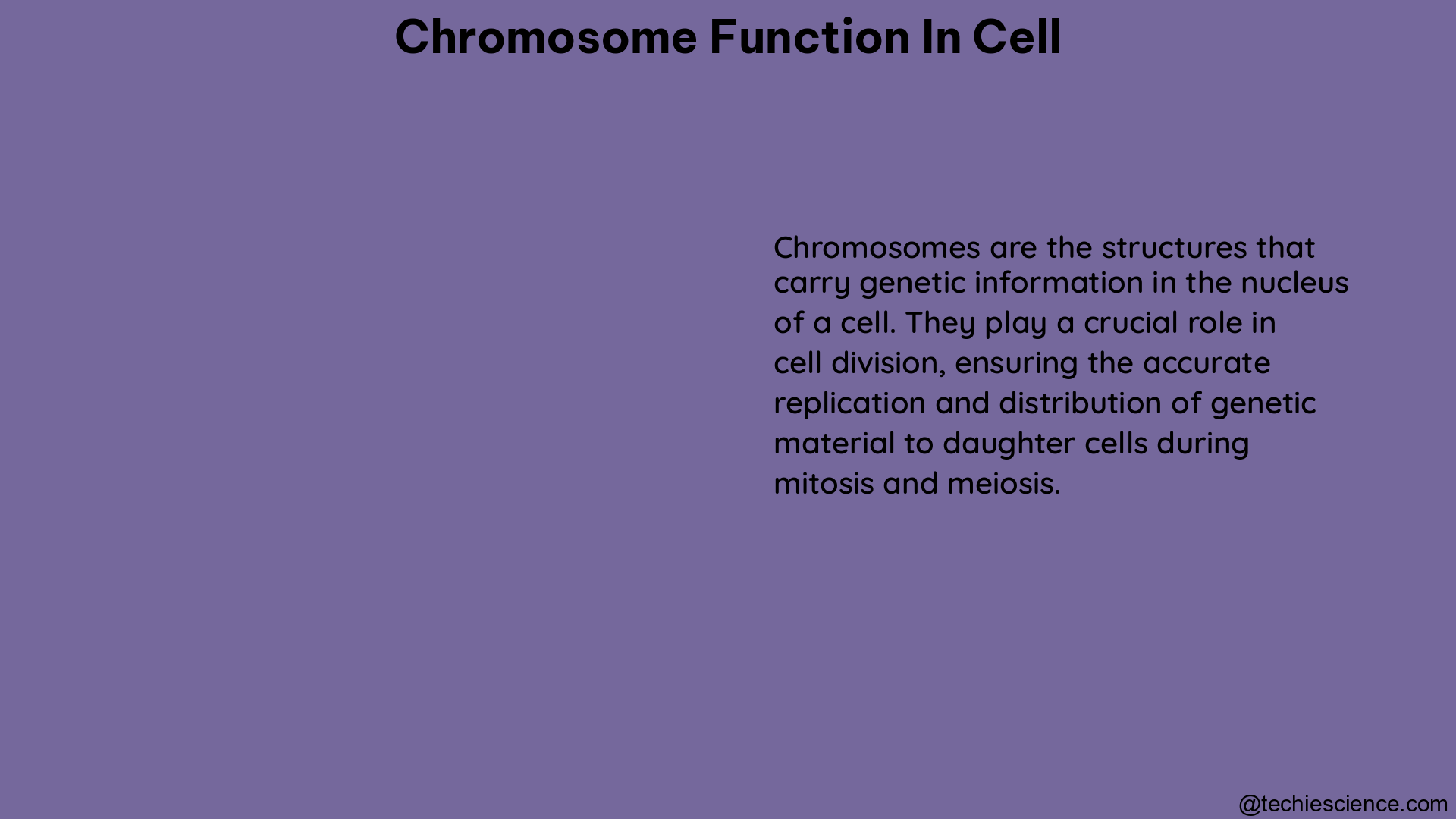Chromosomes, the intricate structures that house our genetic material, play a pivotal role in the intricate dance of cellular processes. These thread-like entities are responsible for the storage, replication, and transmission of the genetic information that defines our very existence. Composed of DNA and histone proteins, chromosomes are the guardians of our genetic blueprint, ensuring the seamless functioning of cells across all domains of life.
Chromosome Structure and Organization
Chromosomes are not merely passive repositories of genetic information; their intricate structure and spatial organization within the nucleus are crucial for regulating gene expression and maintaining genomic integrity. Each chromosome is composed of a single, continuous DNA molecule, which is tightly wrapped around histone proteins to form nucleosomes. These nucleosomes then fold and coil into a higher-order chromatin structure, ultimately giving rise to the characteristic X-shaped appearance of chromosomes during cell division.
The organization of chromosomes within the nucleus is not random; rather, they occupy specific territories, with genes located in close proximity to one another more likely to be co-expressed. This phenomenon, known as the “chromosome territory” model, has been extensively studied using advanced imaging techniques, such as laser-UV-microbeam and fluorescence in situ hybridization (FISH).
Chromosome Dynamics during the Cell Cycle

Chromosomes undergo remarkable structural changes as cells progress through the cell cycle. During interphase, when the cell is not actively dividing, chromosomes exist in a relatively decondensed state, allowing for gene expression and DNA replication. However, as the cell enters mitosis, the chromosomes undergo a dramatic transformation, condensing into the familiar X-shaped structures visible under a microscope.
This condensation process is crucial for the accurate segregation of chromosomes during cell division. Studies using isolated chromosomes have revealed that the elastic properties of chromosomes change during mitosis, becoming stiffer as they condense. Interestingly, this structural change is not driven by a scaffold of protein crosslinkers, but rather by a network of intertwined DNA molecules.
Chromosome Segregation and the Role of Topoisomerase II
Ensuring the proper separation of sister chromatids during cell division is another critical function of chromosomes. This process is facilitated by the enzyme topoisomerase II, which is responsible for decatenating, or untangling, the DNA strands. When topoisomerase II is inhibited, the chromosomes become decondensed and less defined, leading to drastic morphological changes along the entire length of the chromosome.
Chromosome Conformation and Gene Expression
The spatial organization of chromosomes within the nucleus not only influences gene expression but also plays a crucial role in coordinating transcriptional activity. Using single-cell imaging methodologies, researchers have found that individual genes adopt a constrained conformation and reposition toward the centroid of the surrounding chromatin upon activation. Interestingly, the physical distance between genes on individual chromosomes, rather than their genomic distance, is the primary factor driving co-bursting of gene expression.
By combining this analysis with live-cell imaging, researchers have been able to arrive at a corrected transcriptional correlation for genes separated by less than 400 nanometers (nm). This highlights the importance of understanding the three-dimensional organization of chromosomes and its impact on gene regulation.
Advances in Chromosome Research
The study of chromosomes has been greatly advanced by the development of cutting-edge imaging and genetic techniques. These tools have enabled researchers to quantitatively measure the distances between genomic DNA and subnuclear compartments, as well as analyze chromosome conformation and biological processes in single or living cells.
For example, a recent study using synthetic analysis of chromatin tracing and live-cell imaging revealed a physical property of human chromosomes, where individual genes adopt a constrained conformation and reposition toward the centroid of the surrounding chromatin upon activation. This finding provides valuable insights into the intricate relationship between chromosome structure and gene expression.
Conclusion
Chromosomes are the fundamental units of genetic information, responsible for the storage, replication, and transmission of our genetic blueprint. Their intricate structure, dynamic organization, and critical functions in regulating gene expression and ensuring proper chromosome segregation during cell division make them essential for the proper functioning of cells. As our understanding of chromosome biology continues to evolve, thanks to advancements in imaging and genetic techniques, we are gaining unprecedented insights into the complex interplay between chromosome structure and cellular processes.
References:
- Quantifying the large-scale chromosome structural dynamics during cell cycle. Royal Society Open Science. https://royalsocietypublishing.org/doi/10.1098/rsob.230175
- Novel insights into mitotic chromosome condensation. PMC. https://www.ncbi.nlm.nih.gov/pmc/articles/PMC4962293/
- Synthetic analysis of chromatin tracing and live-cell imaging reveals a physical property of human chromosomes. eLife. https://elifesciences.org/articles/81861
- Chromosome Territories | Learn Science at Scitable – Nature. https://www.nature.com/scitable/topicpage/chromosome-territories-the-arrangement-of-chromosomes-in-3025/
- Toward an Integrative View of Chromosome Structure and Function. ScienceDirect. https://www.sciencedirect.com/science/article/pii/S1097276519309517

Hi, I am Milanckona Das and pursuing my M. Tech in Biotechnology from Heritage Institute of Technology. I have a unique passion for the research field. I am working in Lambdageeks as a subject matter expert in biotechnology.
LinkedIn profile link-